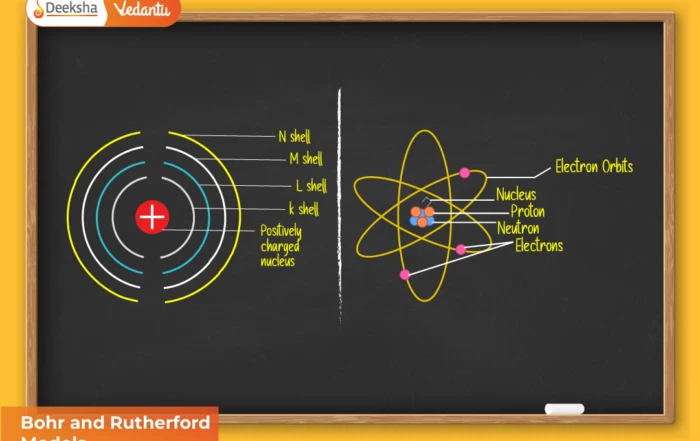Introduction
As scientific exploration advanced, chemists discovered more elements with diverse properties. Studying each element individually soon became overwhelming, as no organised structure existed to show similarities, differences, or patterns. With 118 known elements today, it is impossible to learn their behaviours in isolation. The classification of elements provided a systematic framework that transformed chemistry from a memorisation-heavy subject into a predictable and logical science. This system allowed chemists to recognise trends, understand chemical reactivity, and predict the behaviour of unknown or newly discovered elements.
Classification not only brought order to chemical knowledge but also helped establish the foundation for understanding modern concepts such as electronic configuration, bonding, reactivity, and periodic trends. It allowed scientists to develop the periodic table-the most powerful tool in chemistry-which continues to guide research, education, and innovation.
Growing Number of Elements
Initially, only a handful of elements like gold, copper, silver, carbon, and sulfur were known. Their properties were easy to study and compare. However, as technology improved and more elements were discovered, the complexity grew exponentially. Each element had unique characteristics-atomic mass, density, valency, melting point, reactivity, and more.
As the list grew, the absence of a classification system created multiple challenges:
- Memorising individual properties became impractical.
- Comparing elements based on random ordering led to confusion.
- Predicting chemical behaviour without a pattern was guesswork.
- Understanding relationships between atomic structure and properties was nearly impossible.
By arranging elements logically, chemists were finally able to bring structure and clarity to the subject.
Challenges Without Classification
- No basis for grouping similar elements together
- Difficulty understanding chemical reactions and bonding behaviour
- No ability to recognise trends such as ionisation energy or electronegativity
- Inability to predict the behaviour of unknown or undiscovered elements
- Confusion in naming, identifying, and organising elements in a meaningful order
Need for Systematic Arrangement
A scientific classification system helps chemists:
- Group elements with similar physical and chemical properties
- Identify families such as alkali metals, halogens, noble gases, etc.
- Predict how an element will react in various conditions
- Determine the type of compounds an element can form
- Connect atomic structure with periodic properties like metallic character, valency, and reactivity
Without classification, chemistry would lack order, predictability, and deeper understanding.
Discovery of Periodicity
During early attempts at classification, chemists observed a remarkable feature-certain properties of elements repeated at fixed intervals. This repetition was named periodicity.
Meaning of Periodicity
Periodicity refers to the repeating pattern of physical and chemical properties of elements when they are arranged in increasing order of atomic number. This repetition forms the basis of the periodic table.
Importance of Periodicity
- Helps recognise systematic trends in atomic and ionic size
- Reveals clear patterns in ionisation enthalpy and electron gain enthalpy
- Allows prediction of element reactivity in chemical reactions
- Helps understand the formation of acids, bases, salts, and complex compounds
- Forms the backbone of the Modern Periodic Table, the most significant achievement in chemical classification
Periodicity gives chemistry its structure, enabling predictions and logical reasoning rather than memorisation.
Key Advantages of Classifying Elements
Element classification does far more than provide order-it reveals the underlying principles of atomic structure and chemical reactivity.
Makes Studying Chemistry Easier
A structured arrangement reduces complexity by grouping elements with similar properties. This allows students and researchers to study trends instead of memorising random data.
Predicting Element Properties
By knowing the group, period, and position of an element, we can predict:
- Whether it is a metal, non‑metal, or metalloid
- Number of valence electrons and likely valency
- Oxidation states and bonding behaviour
- Type of ions formed during reactions
- Relative reactivity compared to other elements in its group
Understanding Chemical Reactions
Elements belonging to the same group show similar chemical reactions. For example:
- Alkali metals react vigorously with water
- Halogens form salts when combined with metals
- Noble gases are mostly inert
This helps chemists predict reaction outcomes, write balanced equations, and analyse complex reaction mechanisms.
Linking Properties with Electronic Configuration
Electronic configuration determines:
- Atomic size
- Ionisation enthalpy
- Electron affinity
- Electronegativity
- Metallic and non‑metallic character
The periodic table reflects these configurations, helping students understand how atomic structure influences chemical behaviour.
Real-World Applications
The classification of elements is not limited to textbooks; its applications extend to multiple industries.
In Material Science
Classification helps identify elements useful for wires, alloys, semiconductors, superconductors, and structural materials.
In Medicine
Understanding reactions of metals, non‑metals, and metalloids assists in designing medical implants, diagnostic tools, and therapeutic compounds.
In Environmental Science
Periodic properties explain:
- Behaviour of atmospheric gases
- Reactivity of pollutants and heavy metals
- Mechanisms behind corrosion, oxidation, and environmental degradation
In Industry
Chemical industries rely on periodic trends to select catalysts, design processes, and predict outcomes of large‑scale reactions.
FAQs
Q1. Why is classification of elements important?
Classification organises elements based on patterns and properties, making it easier to study and predict their behaviour.
Q2. What would happen if elements were not classified?
Without classification, chemistry would be a disorganised subject with no clear trends, making prediction and comparison extremely difficult.
Q3. What is periodicity in elements?
Periodicity is the recurrence of physical and chemical properties at regular intervals when elements are arranged by increasing atomic number.
Q4. How does classification help in predicting chemical behaviour?
Elements in the same group share similar electronic configurations, allowing chemists to predict how they bond, react, and form compounds.
Q5. How many elements are currently known, and why is classification necessary?
There are 118 known elements. Classification helps organise them logically and reveals trends that simplify learning and research.
Conclusion
The need to classify elements arose from the increasing complexity of chemical knowledge. By grouping elements systematically, chemists created a powerful framework that connects atomic structure with periodic trends, bonding, and reactivity. This organisation transformed chemistry into a logical science where predictions and reasoning replaced memorisation. Understanding the importance of classification allows students to build a strong foundation for advanced chapters in bonding, periodic trends, and inorganic chemistry, making this concept indispensable for both board exams and competitive exams.











Get Social